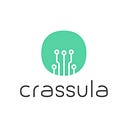If you are a company that would like to provide its own online banking services, you have to be prepared to face the vast amount of rules and regulations the company will have to comply with. Apart from authorizing the company in a corresponding regulatory institution, you will have to become an electronic money institution. How is it done?
In order to become an electronic money institution, you will need to obtain either a SEMI (small electronic money institution) or AEMI (authorized electronic money institution) license. What is the difference between the two licenses?
A SEMI (small electronic money institution) license authorizes you to provide payment and banking services without the licensing capital or an AML team. Small EMI is faster to obtain: the average licensing time is between 3 to 4 months. The limits lie in the amount of money the business can run a payment service for or the amount of money issued. The limit for payment services is EUR 36,000,000 per year, whereas the limitation for e-money issuance is EUR 5,000,000 per year.
AEMI (authorized electronic money institution) license requires a licensing capital in order to obtain it. Additionally, you will have to provide details on how you will ensure the safety of user funds, as well as information about shareholders and the team, which should be no less than 5 or 6 employees. The AEMI license is longer to obtain and may take up to 7 months. However, after all of the processes, you will have the full right of payment service provision and e-money issuance with no limitations.
What do you need to apply for an Electronic Money Institution license?
As part of your application, you will be required to prepare and submit the following documents:
- A business plan which explains what your business is doing and what the license is needed for.
- Evidence that your business will be able to generate e-money, with a monthly average. For the SEMI license, that average should not exceed limits.
- A thorough description of how your company will ensure the safety of user funds.
- The documents clearly stating your internal procedures and governance arrangements to run an effective and safe e-money business and banking.
- The capital of EUR 350,000.
The moral is: obtaining an EMI license requires a lot of paperwork and takes months. Not every business has time and funds to do that. Therefore, another solution is to acquire your own e-money license as an EMD agent. An EMD agent is a firm that acts on behalf of another firm that is authorized as an e-money institution. Such companies can be merchant solutions, payment processing platforms, e-wallets, or banking software platforms. For example, banking software platforms like Crassula partners with companies and individual agents that offer sublicensing. Sublicensing could be the fastest solution to start own business banking in the meantime while obtaining your own license. In addition, addressing banking software platforms would eliminate time for technology development. In that way, Crassula platform helps to open and run a business, choose technological partners, and getting licensed via selected service providers.
Entering the finance and banking industry is always time-consuming and stressful in terms of compliance. However, even there you can find some shortcuts. The licensing usually takes a substantial amount of time and money in the set-up process. Depending on your needs, urgency and business strategy, you can obtain AEMI or SEMI licenses. However, if you are a starting company that does not have enough funding for such substantial investments into getting your own license, a great solution is to become an EMD Agent and sublicense. Becoming an EMD Agent is fast with no hustle, as well as no need to have a big amount of funds to put into the capital, which is beneficial for young companies that want to invest in the growth first. If you value your time and money, you may consider the latter. Crassula platform is ready to help you with core banking system and recommendations on sublicensing: contact us on business@crassula.io to learn more.
Visit crassula.io to learn about our platform.
